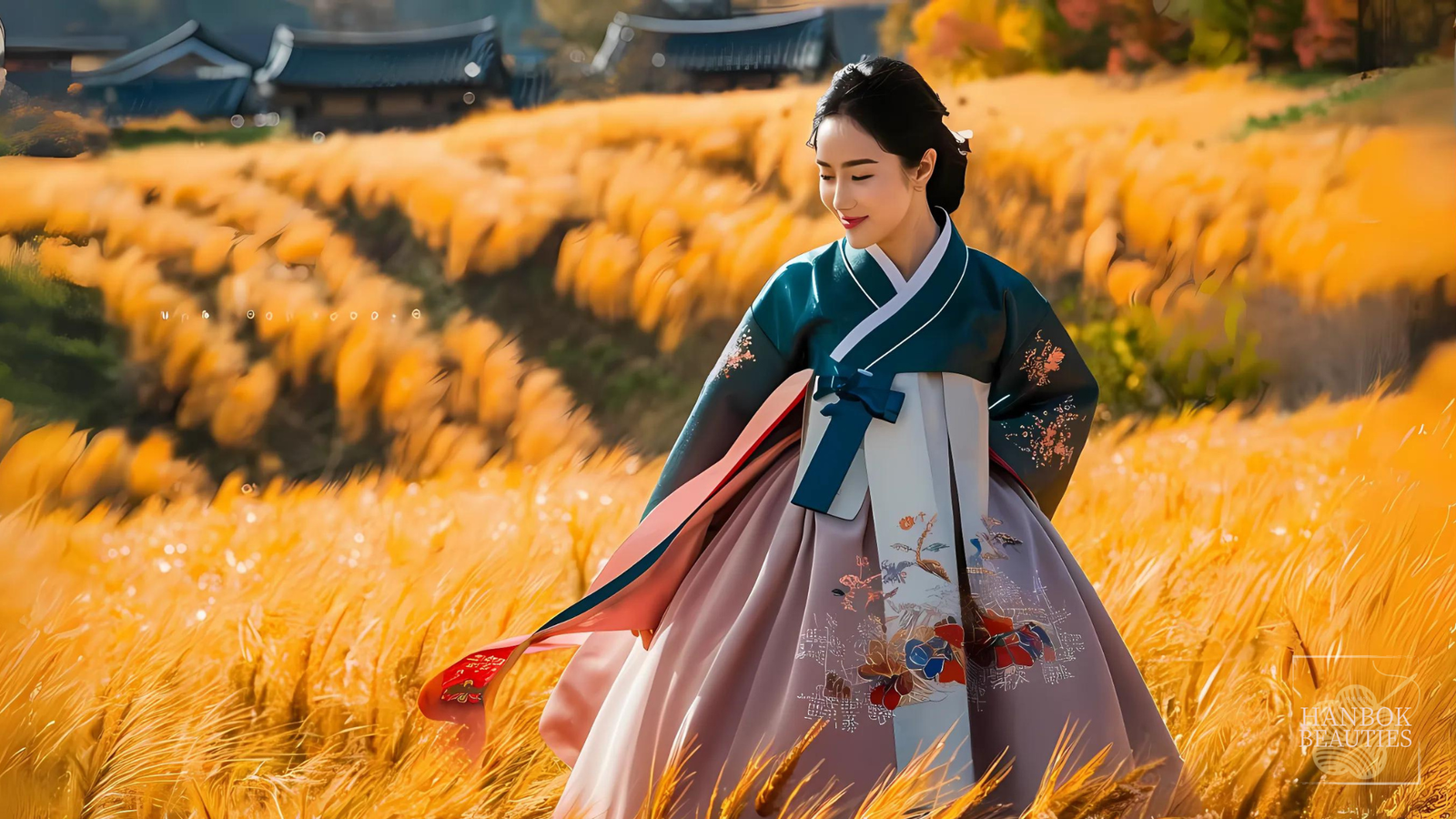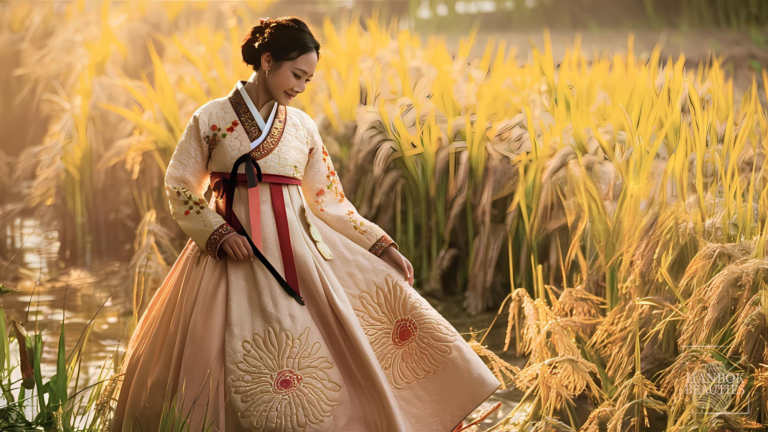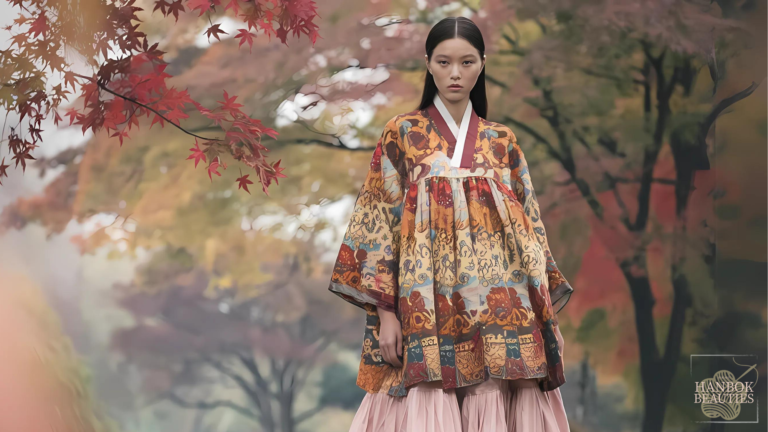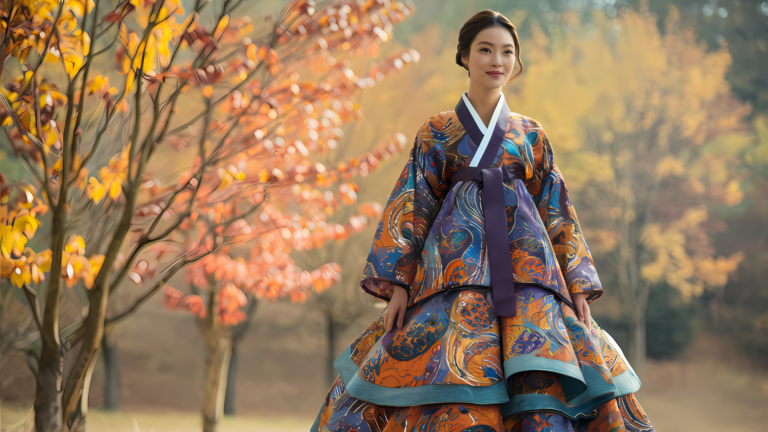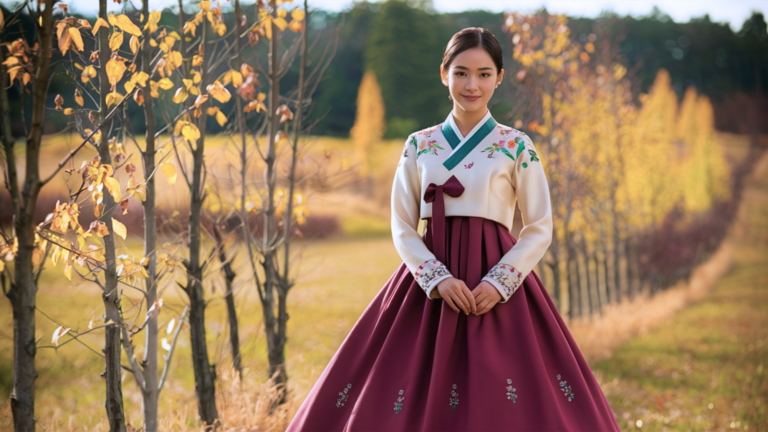5 Lesser-Known Motifs in Fall Seasonal Hanbok: Hidden Gems of Korean Tradition
Introduction: The Hidden Depths of Fall Hanbok Design
Fall seasonal hanbok is a treasure trove of cultural symbolism, with many lesser-known motifs in fall seasonal hanbok waiting to be discovered. While popular designs often steal the spotlight, these hidden gems offer a deeper appreciation of Korean heritage and the autumnal season. For a broader understanding of hanbok’s cultural significance, explore our article on Hanbok: The Living Canvas of Korean Culture.
The lesser-known motifs in fall seasonal hanbok are not mere decorations; they’re a visual language that speaks of harvest, natural cycles, and ancient wisdom. As we explore these subtle elements, we’ll uncover the rich storytelling woven into every thread of fall seasonal hanbok.
In this journey through the world of lesser-known motifs in fall seasonal hanbok, we’ll examine five designs that often escape notice but play a crucial role in the garment’s artistry. Each motif represents a facet of Korean culture, offering insights into the nation’s relationship with nature and the passage of time. To learn more about how hanbok changes with the seasons, read our comprehensive guide on The Art of Transitioning from Summer to Autumn.
The Persimmon Motif: Nature’s Sweet Transition

Among the lesser-known motifs in fall seasonal hanbok, the persimmon stands out as a symbol of autumn’s bounty. This fruit, ripening as the season turns, is a perfect emblem for fall designs in hanbok. The persimmon motif in fall seasonal hanbok often appears as delicate embroidery or subtle prints, symbolizing the sweet transformation of autumn. Its presence in hanbok design represents patience and the rewards of waiting, much like the fruit itself, which becomes sweeter as it ripens.
Artisans incorporate the persimmon into fall seasonal hanbok with remarkable subtlety. You might find it as a recurring pattern in fabric prints or delicately embroidered along sleeves and collars. The persimmon motif in fall seasonal hanbok represents more than just a seasonal fruit; it symbolizes transformation and the sweet rewards of patience.
Different stages of the persimmon’s ripeness might be depicted in a single hanbok design, adding depth to the garment and inviting reflection on life’s natural cycles. By recognizing this lesser-known motif in fall seasonal hanbok, you’ll gain a deeper appreciation for the thoughtful symbolism woven into these traditional garments. Discover more about the colors used in fall hanbok in our article Autumn’s Palette: 5 Timeless Warm Tones for Fall Seasonal Hanbok.
Bamboo in Autumn: Resilience and Integrity

While less commonly associated with autumn, bamboo is one of the intriguing lesser-known motifs in fall seasonal hanbok. Its representation offers a unique perspective on this versatile plant, symbolizing steadfastness and flexibility – qualities highly valued in Korean culture.
In fall seasonal hanbok, bamboo patterns may appear in muted greens or golden hues, reflecting the plant’s transition through the seasons. This lesser-known motif in fall seasonal hanbok serves as a reminder of nature’s resilience, representing the Korean ideal of adapting to life’s challenges while maintaining one’s core values.
The bamboo motif in fall seasonal hanbok also carries deeper philosophical meanings rooted in Confucian principles. Its hollow stem represents humility and open-mindedness, while its straight growth symbolizes integrity and moral uprightness. By wearing hanbok adorned with bamboo motifs, one not only celebrates the beauty of autumn but also embodies these admirable qualities. This lesser-known motif in fall seasonal hanbok thus serves as a wearable reminder of traditional Korean values, bridging the gap between nature, culture, and personal aspiration. For a complementary perspective on fall hanbok colors, explore our guide to Cool Hues: 5 Essential Autumnal Colors for Fall Seasonal Hanbok.
Dried Grass: The Beauty of Impermanence

Among the lesser-known motifs in fall seasonal hanbok, dried grass captures the ephemeral beauty of autumn. This often-overlooked element of the landscape finds its place in hanbok design, celebrating the quiet grace of nature’s transitions.
Artisans may depict this lesser-known motif in fall seasonal hanbok using delicate embroidery techniques or as a subtle print. The effect is one of gentle movement, as if a breeze is passing through the garment. This motif serves as a meditation on impermanence and the beauty of letting go, reminding the wearer that change is an essential part of life’s cycles.
The dried grass motif in fall seasonal hanbok also carries a subtle reference to Korean agricultural traditions. It evokes memories of harvest seasons past, when fields of golden grass would sway in the autumn breeze. Some designers incorporate this lesser-known motif in fall seasonal hanbok by using actual dried grass in their dyeing process, creating unique patterns and textures that quite literally bring a piece of the autumn landscape into the garment. This technique not only adds visual interest but also infuses the hanbok with a tactile connection to nature, allowing the wearer to carry a piece of the Korean countryside with them.
Chestnut Burrs: Protection and Abundance

The chestnut burr, with its spiky exterior and hidden treasure within, is a fascinating lesser-known motif in fall seasonal hanbok. It represents both protection and the promise of abundance – themes deeply resonant with the autumn season.
In hanbok design, this lesser-known motif in fall seasonal hanbok might appear as textured appliqués or intricate knotwork. The symbolism of the chestnut burr is multifaceted, representing safeguarding what’s valuable and the rewards of perseverance. This motif reminds us that sometimes, life’s most precious gifts come in challenging packages.
In fall seasonal hanbok, the chestnut burr motif often appears in unexpected ways, showcasing the creativity of Korean artisans. Some designers create three-dimensional embellishments that mimic the texture of the burr, adding a tactile element to the garment. Others might use the chestnut burr’s distinctive shape as inspiration for repeating patterns in jacquard weaves or as a central motif in larger embroidered scenes depicting autumn landscapes. This versatility makes the chestnut burr one of the most intriguing lesser-known motifs in fall seasonal hanbok, allowing for both subtle and bold interpretations that celebrate the complex symbolism of this autumn treasure.
Autumn Millet: Nurturing and Prosperity

Millet, a humble grain with a rich history in Korean agriculture, is another of the lesser-known motifs in fall seasonal hanbok. Its inclusion speaks to themes of nourishment, prosperity, and the fruits of labor.
Hanbok designers might incorporate this lesser-known motif in fall seasonal hanbok as tiny, repeating patterns or as more prominent design elements. In Korean tradition, millet symbolizes abundance and the nurturing aspect of nature. Its presence serves as a reminder of the harvest season’s blessings and the importance of community in reaping life’s rewards.
The millet motif in fall seasonal hanbok often draws inspiration from the plant’s distinctive appearance. Artisans might depict the tall, slender stalks and feathery seed heads using delicate embroidery or as part of a larger autumnal scene. Some designers take a more abstract approach, translating the texture of millet fields into subtle patterns woven into the fabric itself. This lesser-known motif in fall seasonal hanbok not only adds visual interest but also connects the wearer to Korea’s agricultural heritage. It serves as a reminder of the hard work and communal effort that goes into cultivating the land, making it a powerful symbol of Korean cultural values.
Conclusion: Appreciating the Subtleties of Fall Hanbok Artistry
As we’ve explored these five lesser-known motifs in fall seasonal hanbok, it becomes clear that these garments are canvases for intricate storytelling. Each element adds layers of meaning, enriching the hanbok with cultural significance and natural symbolism.
These lesser-known motifs in fall seasonal hanbok invite us to look closer and appreciate the nuanced artistry involved in their creation. They remind us that in Korean culture, beauty often lies in the details – those quiet elements that might not immediately catch the eye but resonate deeply with those who understand their significance. For a regional perspective on fall hanbok, check out our article on 6 Enchanting Secrets of Jeju’s Fall Seasonal Hanbok.
By recognizing these hidden gems, we gain a deeper appreciation for fall seasonal hanbok as cultural artifacts. The next time you encounter fall seasonal hanbok, take a moment to search for these lesser-known motifs, connecting with centuries of Korean tradition and the timeless beauty of autumn.
